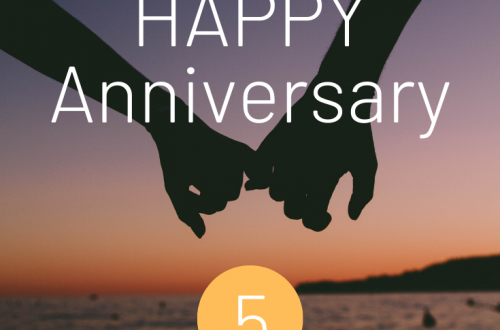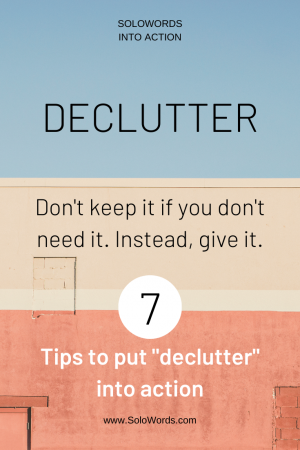
Declutter: Don’t keep it if you don’t need it. Instead, give it.
Declutter: Getting rid of things. Do you think that our capability of letting go of material things is inherited? I ask because my mom was an expert at keeping things. She was also an expert at organizing everything in a singular way that always astonished me. I remember during my school years to go to my mom asking for something in particular for a school project. Every time, her answer was: “Um, let me think…” and after a minute or so, her face just brightened up with a big smile, and then three magical words came out of her mouth “I have it!” For me, it was incredible to realize that my mom always had everything I needed, even the most unexpected things. For my mom, I guess, was the self-satisfaction of giving use to one of the so many things she saved and the self-proudness because she kept it.
Well, guess what? I am like my mom, maybe at a lower level but with the same tendency to save things and with a lot of difficulties to let go. Every time I want to do a major clean up or put into action the word “declutter,” I get overwhelmed, anxious, and not very efficient, letting things go. It is like I am programmed to always think: “who knows?” or “maybe.”
After talking with my cousin Andreina, who is an expert in decluttering and organization, I realized how different we both think about decluttering and understood that the only way to improve in the art of letting go would be to change the way I think about it.
What does it mean to declutter?
For Cambridge Dictionary “Declutter” is:
To remove things you do not need from a place, in order to make it more pleasant and more useful
When we talk about decluttering, we usually refer to material things, but we can also use the word declutter for anything we keep that we don’t use or no need anymore. i.e., apps in our phones, emails, papers, and feelings, among others. For this post, I will refer only to material things, but let’s be aware of the other things too.
Common thoughts of people who struggle with decluttering: (yes, like me)
These are some examples of thoughts that come to my mind every time I am in a decluttering mode:
- Maybe I can use it later
- Perhaps someone in my family can use it
- Maybe this fashion trend will come back
- Perhaps it will fit me later
- I paid too much for it. I can’t throw it away even if it is broken
- This might work for a Halloween costume
- I used to love this so much; maybe I can use it again
- This study guide might be useful for my youngest kid
- I feel bad because I never used it so I will keep it, who knows
- This beautiful bag, box or container could be useful someday
- This could be worth a lot, I will keep it
- My kids loved this; I will keep them for my grandkids
Typical thoughts of a declutter expert:
These are some examples of how a declutter expert think all the time:
- If I haven’t used it recently, I won’t use it later
- If I think something could be useful for someone in my family, I will ask that person if he or she will use it. If the answer is no, I’ll donate it
- I don’t keep things based on future predictions. I only think about what I need and use now.
- I keep only things that I am sure I will use
- The things that I used to love so much are from the past. If I haven’t used them, that means they belong to the past. There is no need to keep them
- I can keep study guides for my younger kids until the time they are supposed to use them. If they don’t use them, I throw them away
- Whatever I buy, I use it as soon as possible. I don’t wait for the right day to come to use them
- I don’t store boxes, bags, or containers. I have a specific quantity of these items that I need. I don’t store extras
- When getting rid of something, I never think about how much did I pay for it. I already used it and enjoyed it. That’s it!
- It is ok to keep things that have sentimental value, but we have to try to be selective.
- If I haven’t used something for sometime, that means I don’t need it anymore. If I need it in the future, I will buy another one. I always think, someone may need it now
- I need one or two of this; the rest can be useful to another person
- Having duplicates take up space. I like to have space
- If it is ripped, broken, stained or damage, I get rid of it. That’s it
- I only keep what I need in the quantities I need.
7 Tips to put "declutter" into action:
The following tips are a good start for people who, like me, struggle with decluttering.
1. Think like a declutter expert:
If we want to improve in the art of letting go, we need to change the way we think about material things that we don’t use and are only taking space. Let’s put into action some of the expert thoughts stated above. Let’s change the words “Who Knows” and “Maybe” for “live in the present” and “others need it now”. Changing the way we think will change the way we act.
2. Take pictures of things that are hard to let go.
Things like our kids’ artwork, a sweater we used to love, and anything we inherited are just a few things we can keep in photos instead of occupying a space in our house. Having them in a box, we never open, is not better than having them on our computer.
3. Find a place where we can donate that makes us feel good about it.
There are different places where we can donate our things: Stores like Salvation Army and Goodwill, drop off bins located in parking lots representing different kind of organizations, churches, and shelters in our comunities. We can also check out this post from Move.org “How to Donate Your Used Items (and Help Someone in Need at the Same Time).” The important thing is to choose the one that makes us have the strong feeling of helping people. For some people giving it to a store that resells, doesn’t make them feel the same as to giving it directly to someone in need.
4. Get in the habit to let go one thing a day: challenge ourselves to get rid of one thing a day for 30 days:
Have a box in hand where we can put donations. Let’s challenge ourselves to get rid of one thing a day for 30 days. After 30 days, let’s take it to the donation place of our preference. Waiting 30 days to drop it off at the donation place helps us manage the anxiety of letting it go immediately. Tip: Never look back at what is in the box
5. Ask for help:
If we want to make a significant cleanup it is better to find a friend or family member that is good about letting things go. Ask him or her to help you decide which items should stay and which ones no. Then make sure to get rid of them the same day.
6. Sell things:
There are different apps where we can sell our stuff. My favorite is the marketplace of Facebook. We can try to sell there anything, but we have to make sure to put a due date. i.e. If the item we put for sale doesn’t sell in a month, we will donate it. Tip: If a week has passed and no one has shown interest, reduce the price. If someone is interested but offers to buy at a lower price, accept it. If we don’t accept the offer, there is a high possibility that we end up donating it. Remember, don’t focus on the money or how much we paid for it. If it is an old item we used and enjoyed, it means the item already provided us with what we needed at that time.
7. Replace. Don't accumulate:
This one is a hard tip from my cousin but a good one to stop accumulating. Every time we buy something, it should be to replace something. This means that if we buy a new t-shirt, we should get an old one and donate it. My cousin goes to Goodwill at least twice a month to drop things off. It is part of her weekly routine to organize and put away everything she doesn’t use.
Conclusion:
I know it is very hard to change the way we think when we are programmed one way. However, we all know that when we have a good reason to do something, we do it no matter what. My reason to improve in the art of letting go comes with my interest in minimalism and simplicity. (Read my post about Minimalism: less is more). Also, I want to liberate myself of things that I don’t need anymore, and that unconsciously or sometimes consciously represents a burden for me. My cousin gave me the key to do that: “Think first about the good you can do to others by giving away what you don’t need, but they do.”
I loved that my mom always had in her keepings anything I needed. I have very good memories of her happy and pleased face every time she said: “I have it”. Thanks to my mom, I have had those happy and satisfying moments with my children too. However, I recognize that I have a lot of things that I don’t need, don’t use, never will have a use in my house, and my children won’t want. Those are the kind of things that become a burden to us, and if something happens to us will become a burden to our kids.
Putting the word declutter into action will be very challenging for some of us, but every day is a new day to start, to try, to practice, and to give. Today is a new day, let’s do it.
Here are my two questions for you:
- Do you have a hard time getting rid of stuff?
- What is that one thing you don’t use but think “who knows” or “maybe”?
If you want to learn more about “Declutter” from a different perspective, here is a link to an interesting TEDx Talk to watch.
Listen to the Monster in your Closet | Star Hansen | TEDxTucson
Easy to download, high resolution image to print at home or favorite local or online print shop in any of the following sizes: 5 x 7, 8 x 10, 11 x 14, 16 x 20 and 18 x 24. To download, click the green bottom bellow.
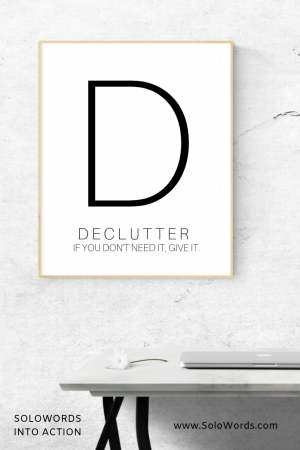


You May Also Like
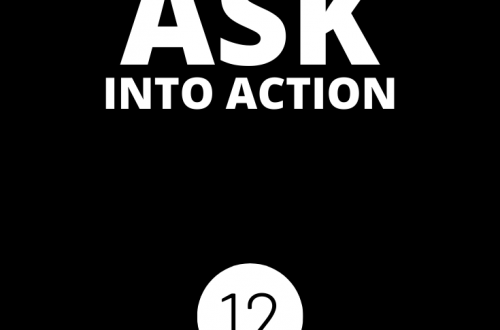
Take the risk and ask: 12 things worth asking
November 13, 2019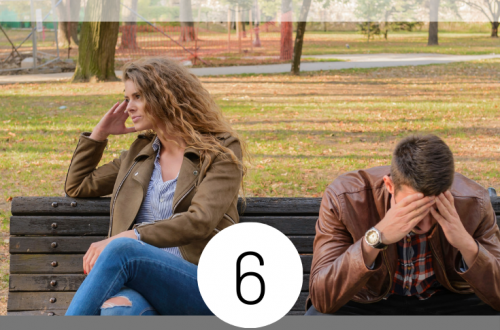
Discussing or Fighting? 6 Tips to have a better discussion and avoid fighting
October 23, 2019